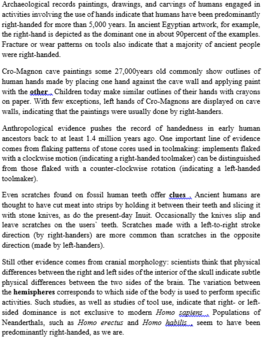Read the following passage and mark the letter A, B, C, or D on your answer sheet to indicate the correct answer to each of the questions from 36 to 42.
The invention of the incandescent light bulb by Thomas A. Edison in 1879 created a demand for a cheap, readily available fuel with which to generate large amounts of electric power. Coal seemed to fit the bill, and it fueled the earliest power stations (which were set up at the end Of the nineteenth century by Edison himself). As more power plants were constructed throughout the country, the reliance on coal increased. Since the First World War, coal-fired power plants have accounted for about half of the electricity produced in the United States each year. In 1986 such plants had a combined generating capacity of 289,000 megawatts and consumed 33 percent of the nearly 900 million tons of coal mined in the country that year. Given the uncertainty in the future growth of nuclear power and in the supply of oil and natural gas, coal-fired power plants could well provide up to 70 percent of the electric power in the United States by the end of the century.
Yet, in spite of the fact that coal has long been a source of electricity and may remain one for many years (coal represents about 80 percent of United States fossil-fuel reserves), it has actually never been the most desirable fossil fuel for power plants. Coal contains less energy per unit of weight than natural gas or oil; it is difficult to transport, and it is associated with a host of environmental issues, among them acid rain. Since the late 1960's problems of emission control and waste disposal have sharply reduced the appeal of coal-fired power plants. The cost of ameliorating these environmental problems, along with the rising cost of building a facility as large and complex as a coal-fired power plant, has also made such plants less attractive from a purely economic perspective.
Changes in the technological base of coal fired power plants could restore their attractiveness, however. Whereas some of these changes are evolutionary and are intended mainly to increase the productivity of existing plants, completely new technologies for burning coal cleanly are also being developed
Where in the passage is there a reference to the establishment of the first electric power stations?
A. Lines 2-3
B. Lines 5-7
C. Lines 9-11
D. Lines 16-18








Đáp án A
Thông tin được đề cập đến ở dòng 2, 3 “Coal seemed to fit the bill, and it fueled the earliest power stations (which were set up at the end Of the nineteenth century by Edison himself)” → chọn A